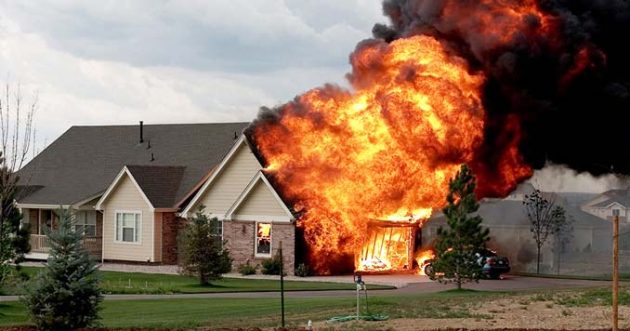Most people know that fire is dangerous, but they may not realize different types of fire exist, based on the combustible materials responsible for generating them. While the destructive potential and health threats of fire remain significant no matter what type of fire is happening, different classes of fire require different approaches.
What are these differences and why is it so important to understand them?

The Importance of Understanding Fire Classes
A fire is a fire, right?
Wrong. The root cause of the fire and the combustible materials involved in it will affect the fire in many different ways. Different mediums will produce different types of flames and different types of hazards. They may also burn at a higher or lower temperature than average.
But perhaps most importantly, different suppression and extinguishing approaches need to be taken for different kinds of fire. Class A fires are some of the most common, and can be extinguished with a variety of agents, including water. But if you try to use water on a grease fire, a Class K fire, it could accelerate the spread of flames and make matters much, much worse.
If you want to suppress or extinguish a fire, you need to know how it’s categorized and what the best extinguishing method is.
The Types of Fire
These are some of the most common types of fire:
- Class A fires. Class A fires are highly common because they involve common materials like wood, paper, cloth, trash, rubber, and even plastic. For these types of fires, water is perfectly acceptable. You can also use a dry chemical compound, and certain types of foam.
- Class B fires. Class B fires come from flammable liquids and solvents like paints, lacquers, oil, and gasoline. Water is a bad idea here; you can use a dry chemical extinguisher, carbon dioxide, and certain types of foam suppression for these fires.
- Class C fires. Class C fires originate from electricity. Wiring, machinery, and motors can produce fire as a result of a flaw or damage. These fires need to be extinguished with a dry chemical, halotron, or carbon dioxide device.
- Class D fires. Class D fires are a bit rarer, since they involve combustible metals like magnesium, titanium, and lithium. Dry powder is the only workable solution.
- Class K fires. You wouldn’t be crazy for thinking that Class E fires are next, but the next type of fire is Class K, so named because it’s commonly found in commercial kitchens. This class of fire starts with combustible cooking materials like grease or oil. Wet chemical extinguishers are ideal.
Note that these classes of fires may be called different names in different countries or using different systems. However, the combustible materials can be treated the same regardless of how they’re grouped or named; for example, it’s always dangerous to extinguish a grease fire with water.
Additional Tips for Handling Different Classes of Fire
You can also follow these tips to handle different classes of fire appropriately:
- Install a fire suppression system proactively. In the moment, it’s hard to remember all the right and wrong ways to approach fire mitigation. That’s why so many homes and businesses install fire suppression systems, which typically trigger automatically in response to smoke or fire. You can proactively choose a fire suppression system that’s suited for the most likely types of fire you could face.
- Call for help first. If a fire breaks out in your home or business, you might be tempted to begin combating it immediately. Instead, it’s better to call the fire department (if they’re not automatically contacted). This ensures that professionals can respond to the scene as quickly as possible, while giving you a backup line of defense if your first fire suppression methods fail.
- Only use fire extinguishers if you’re trained to do so. Fire extinguishers can be useful in controlling the spread of small fires, but they can also be dangerous – especially if you use the wrong type of fire extinguisher for the fire in question. Only use a fire extinguisher if you know how it’s supposed to be used and you’re confident in its execution.
- If the fire is ambiguous, don’t take the risk. There are situations where you won’t know the exact cause of a fire or the combustible materials that contribute to it. In these situations, it’s better to err on the side of caution and avoid using a random material to extinguish it.
You don’t need to memorize or thoroughly understand the different classes of fire unless you’re in charge of some kind of safety program. Instead, just remember that different fire classes require vastly different approaches – and only use a fire extinguisher or fire suppression system if you know what you’re doing.














